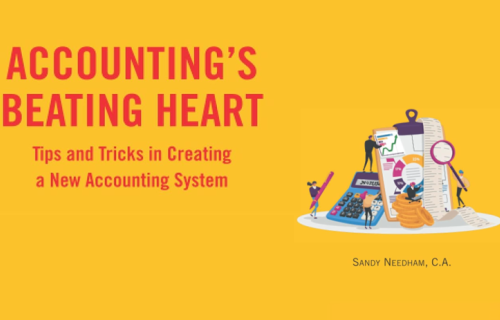If you overhear a CFO musing about ‘the circle of life’, they probably aren’t referring of The Lion King. Chances are they’ve been ruminating about the accountant’s lot – the never-ending cycle of annual budgets. Barely is the metaphorical ink dry on one year’s before thoughts turn to the next.
Similarly, if you catch them mentioning ‘The Age of Uncertainty’ they might be referring to economist John Kenneth Galbraith’s seminal 1977 work of that name, but they are more likely to be focused on contemporary events and their implications.
Accounting for a Changing World
The disclaimer 'past performance is not a reliable indicator of future performance' may have been coined for consumers of financial products, but it’s just as apt a warning for today’s corporate budgeters. Taking last year’s numbers and adding 5% might have worked once, but it doesn’t cut the mustard in these uncertain times. To name just a few of the more obvious challenges:
- Critical elections loom on both sides of the Atlantic, with protagonists trumpeting policies, and indeed world views, that are poles apart.
- Brexit seems to be ‘coming, ready or not!’…but after 3 years we are little closer to understanding what it might look like.
- Trade wars between the largest economies on the planet are hosed down, only to flare up again. Forest fires of unprecedented ferocity are doing the same.
- Whole industries are undergoing, or contemplating, or resisting radical restructuring in a belated response to climate change.
- Pundits place their bets on the next industry ripe for rapid disruption due to emerging, or yet to emerge, technologies.
- High-flying companies are regularly having their wings clipped by sudden outbreaks of consumer activism. Today it might be the #MeToo movement or Xinjiang cotton. What and who will be next?
How on earth are businesses expected to budget for the potential impact of events like these? Conversely, is it responsible, or even conscionable, to ignore them?
How do you incorporate risk analysis on this scale into a financial model?
Add in the usual more localised challenges, and it’s no wonder many are cynical about committing to budgets that have been locked down at least 12 months out from the end of the fiscal period.
Executives and boards hate surprises, but how do you reconcile a ‘no surprises’ culture with a world where one of the few certainties is that we will be regularly surprised? A hurricane here, an impeachment there...
…a world where market sentiments oscillate at the frequency of POTUS Tweets.
Rethinking the role of Forecasting
The less confidence we have in our budget, the more focus there will be on the need for regular, accurate forecasts. Any decent forecast won’t just extrapolate year-to-date actual performance. It will also tweak modelling assumptions to account for external developments.
A budget might be largely aspirational, but a forecast must have both feet firmly planted in solid, if shifting, ground.
They say bad news travels fast, but good/bad can be subjective. That hurricane warning is a problem if you are renting holiday accommodation in its path. It’s an altogether different kind of problem if you are selling tarpaulins. Either way, an ill wind can blow a forecast out of kilter, and requires a quick response.
The more volatile our assumptions are, the louder the calls will be for ever more frequent re-forecasting. Half-yearly becomes quarterly, quarterly becomes monthly, monthly becomes fortnightly.
The inevitable end game is ‘continuous forecasting’.
In this paradigm projections are constantly updated based on real-time data feeds, perhaps analysed and interpreted by AI robots and sophisticated algorithms, enhanced by fresh inputs and insights.
Some purists suggest the budget itself should become redundant in this ‘always look forward, never back’ world. The consensus, however, seems to be that the budget will continue to play a key role when it comes to setting a stake in the ground around expectations, KPIs and incentives. (That said, when reviewing staff performance enlightened executives will acknowledge that agility, and mounting an effective response to changed circumstances, is at least as important as simply ‘meeting budget’.)
So, while the budget and forecast will continue to play different but complementary roles, the smart money is on the processes and approaches surrounding them being due for a shakeup. Budgets will still be produced and respected, but not worshipped.
The focus will shift away from the primacy of the annual budget, and towards the importance of regular, if not continuous, iterative forecasting.
For those that achieve the nirvana of truly continuous forecasting, a budget will effectively become just a ‘push button’ snapshot of the current forecast at a given time, rather than a major project in its own right.
The role of Orchid’s Products
The trends discussed above will increase the pressure on accountants to create ever more sophisticated budgets, and ever more regular forecasts. To achieve success, and maintain their productivity while preserving their sanity, they’ll need to rely on a broader range of inputs, more sophisticated analysis, and fit-for-purpose tools.
These Orchid Products have multiple uses, but are tailor made for Budgeting & Forecasting.
Optional Tables
- Optional Table lets you build your own custom, multi-dimensional data structures within Sage 300, rather than being constrained by the ‘out of the box’ data model. It’s particularly well suited to holding financial and non-financial data needed to support more granular and sophisticated budgets and forecasts.
- Because your Optional Tables data is stored in the Sage 300 database it is backed up with your other data, can easily be included in reports, and is available for display (e.g. in Orchid Notes). Data can be viewed, entered and modified via a Sage 300 screen, or manipulated in an Excel spreadsheet and written directly back to the Sage 300 database using the Optional Tables Spreadsheet Add-in.
Info-Explorer
- Info-Explorer lets you pull data from multiple sources, including Optional Tables, into a cube. You can then do detailed ‘slice and dice’ analysis, perform instant roll-up for a high-level view, or drill down into Sage 300 to see the detail. You can perform top-down adjustments using a variety of spread methods.
- Once you are happy you can use Info-Explorer’s Writeback feature to push data back into the Sage 300 database (or other compatible SQL/ODBC database).

